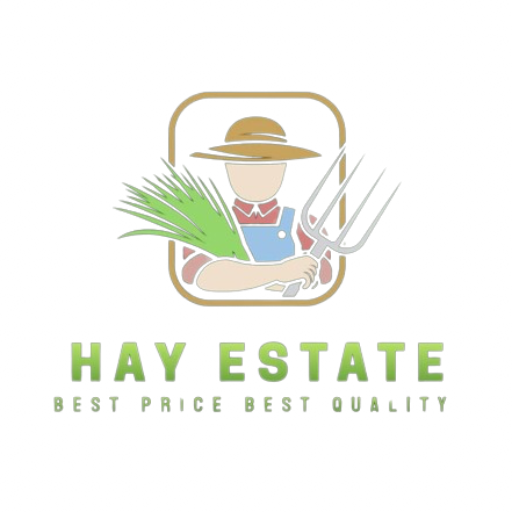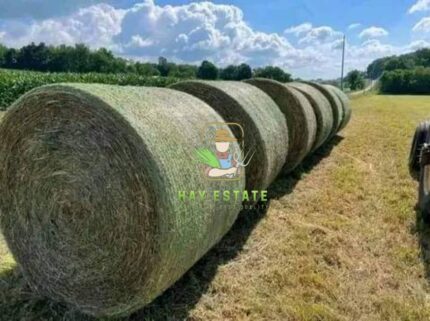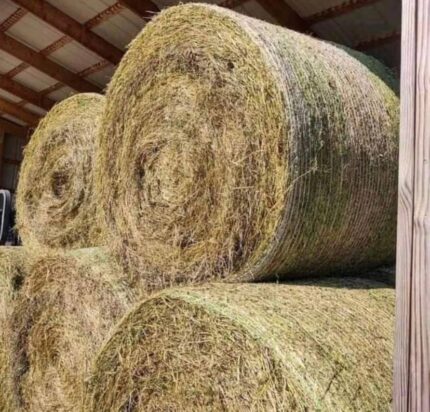TEFF HAY | BUY TEFF HAY NEAR ME
Teff hay is a warm-season annual grass native to Ethiopia, where it has been a staple crop for thousands of years. In recent years, it has gained popularity in other parts of the world, particularly in the United States, for use as both a forage crop and as a gluten-free grain for human consumption. Teff hay is valued for its rapid growth, adaptability to various soil types, and drought resistance, making it an ideal choice for farmers in arid regions.
Teff hay is primarily used as forage for horses, cattle, and other livestock due to its high nutritional value. It is particularly favored for its palatability and digestibility, offering a good balance of protein and fiber. The grass is also used as a cover crop to improve soil health, prevent erosion, and suppress weeds.
How to Recognize Teff Hay
Teff hay is a fine-stemmed grass with a very fine seed. It grows quickly, reaching a height of about 2 to 4 feet. The plant has a tufted growth habit, producing numerous small, fine leaves that are dark green in color. The seed heads are small and delicate, those of millet. When dried and baled, Teff hay is typically light green to brown in color, with a soft texture. It is often preferred by horse owners because it is less dusty and less likely to cause respiratory issues compared to other hays.
Harvesting and Cuttings
Teff hay is usually planted in late spring or early summer, once the soil temperature reaches around 65°F. It can be harvested multiple times during the growing season, depending on the climate and growing conditions. Typically, Teff hay is cut when it reaches the boot stage, just before the seed heads emerge. This timing helps to maximize nutritional content and palatability. After cutting, the grass is allowed to dry in the field before being baled. In optimal conditions, Teff can be harvested two to three times per season, with yields ranging from 1.5 to 3 tons per acre per cutting.
Bale Sizes
Teff Grass is often baled into small square bales or round bales, depending on the intended use. Small square bales typically measure around 14 in x 18 in x 36 in and weigh between 50 and 70 pounds. These bales are convenient for feeding individual horses or small livestock herds. Round bales, which are more common on larger cattle operations, can range from 4 to 6 feet in diameter and weigh between 500 and 1,500 pounds.
Nutritional Facts
Teff Grass is highly nutritious, particularly when harvested at the optimal stage of growth. It typically contains 12% to 15% protein, making it a good option for maintaining healthy weight and muscle mass in livestock. The fiber content is also well-balanced, contributing to good digestive health. Teff is relatively low in non-structural carbohydrates (NSC), which makes it a safe choice for horses prone to laminitis or those needing a low-sugar diet. Teff is also rich in essential minerals such as calcium, phosphorus, and magnesium. The calcium to phosphorus ratio is generally within the ideal range of 1:1 to 2:1, which is important for maintaining healthy bones and preventing metabolic issues in horses. However, as with any forage, the exact nutritional content of Teff Grass can vary depending on the soil quality, fertilization practices, and the stage of maturity at harvest.
Feeding Teff Hay
Teff Hay is an excellent choice for horses, particularly those with metabolic issues such as insulin resistance or those needing a low-sugar diet. It can be fed as the primary forage or mixed with other types of hay to balance the diet. Because of its low NSC content, Teff hay is often recommended for horses that require a low-glycemic diet. However, it can be inconsistent on sugar and protein levels (always check your test!).
The Advantages of Teff hay
Highly Palatable
Provides a good balance of nutrients
Excellent for horses with metabolic concerns.
Often low sugar, but can be inconsistent.
Feeding Recommendations
When introducing Teff hay into a horse’s diet, it is advisable to do so gradually to allow the digestive system to adjust. As with any forage, it is important to consult with a veterinarian or equine nutritionist to determine the appropriate amount to feed based on the horse’s size, weight, and activity level. A general recommendation is to feed 2% to 2.5% of the horse’s body weight in forage per day. For a 1,000-pound horse, this equates to 20 to 25 pounds of hay per day. It is also essential to provide access to fresh water, salt, and minerals at all times.
Horses Need Minerals
Free feed loose minerals as their bodies require.
Hay or grass is the foundation of the diet for all grazing animals. Hay is usually fed to an animal in place of allowing the animal to graze on grasses in a pasture, particularly in the winter or during times when drought or other conditions make pasture unavailable.
If space is a problem, you can depend on Hay Estate Inc.
We stock premium horse quality hay, in Weatherford Texas year round. There are no minimums and we load your truck! Hay sold by the bale. No need to hunt hay ever again!






Reviews
There are no reviews yet.